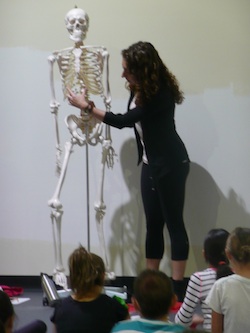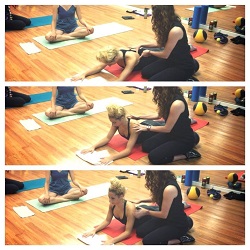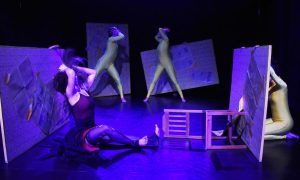By Laura Di Orio of Dance Informa.
As a dancer, you are constantly using your body in new ways. Perhaps you were challenged in a really hard class. Or maybe your company started rehearsing a new piece of repertory. Maybe you took a modern class that incorporated a ton of deep pliés. It’s no wonder, then, that there are some days when you wake up, take your first step out of bed and think, “I am so sore!”
So what does it mean to be “sore”? And what should you do about it? Here, Dance Informa speaks with Marissa Joseph, CSCS, founder of Working Lines Training.
WHAT IS “SORENESS”?
Joseph says that scientists have differing opinions on what is going on in your body when you feel sore. Some believe that soreness might come from minute tears in the muscle fiber’s contractile units. Others believe that feeling sore may actually be psychological.
“Whichever the case,” Joseph says, “feeling ‘sore’ usually constitutes a feeling of stiffness and ache in the muscle belly due to overuse. Soreness usually comes on the morning after a tough rehearsal or workout or anywhere between 24 and 48 hours post.”

Joseph leads workshops on the importance of strength training for dancers. Photo courtesy of Marissa Joseph.
TO STRETCH OR NOT TO STRETCH?
It may be tempting as a dancer to stretch it out when you feel sore. It may feel “good”, or maybe stretching has just become part of your warm-up routine. Stretching, however, may not be the best way to remedy soreness, although it does depend on your degree of soreness.
“If it is correct that soreness is actually caused by micro-tears in the muscle, static stretching, like sitting in your splits, will likely cause more damage to this tissue,” Joseph points out.
Instead, Joseph recommends taking the time to do some gentle dynamic stretches: sun salutations, pliés à la seconde, pliés in sixth position while in a cambré forward, lunges à la seconde.
“This will begin to warm up the body while working through a stretch and bring blood flow to the area,” she adds. “Blood carries nutrients that will help repair tissues.”
If you are very sore, to the point where your movement is counteracted, then Joseph advises staying away from stretching entirely.
LEVELS OF SORENESS
Depending on the level of your soreness, your mode of treatment may differ. If your soreness is very light, Joseph says it’s safe to proceed into your dance day as normal but with a longer warm-up. If your soreness is moderate, she recommends giving yourself ample time to dynamically stretch and do a few exercises. At this level, Joseph also suggests avoiding extreme movements. If your soreness is at an uncomfortable level and causes discomfort when you move, she advises icing the muscle and taking the day off, without even stretching or foam rolling.
A day off may seem almost sacrilegious to dancers, but it could be the best cure for severe soreness. “Once a dancer starts changing his or her movement to work around a sore muscle, they are at a higher risk of injuring themselves,” Joseph adds. “I know it’s tempting to work through your pain, but be sure to give your body a rest when it asks for it! When your muscle stops being sore, you are generally okay to start your normal routine again.”

Working Lines Training Founder Marissa Joseph says stretching may not always be the best remedy for sore muscles. Photo courtesy of Marissa Joseph.
PREVENTING SORENESS?
As a dancer, who is constantly exploring movement or practicing one set of steps repeatedly, you are bound to get sore. It’s part of the game. This unavoidable soreness, however, can be a good thing!
“You will notice that with new stimulus or different stress, your body will generally react by being sore,” Joseph says. “When your muscles adapt to a new regimen or routine, however, you’ve become stronger and should no longer feel achy. I think it is good to be sore sometimes. It usually means that you are challenging your body. The more we physically challenge our bodies, the stronger they will become!”
SORE DANGER
Make sure you continuously check in with your body, and pay attention to the degree of your soreness.
“If your soreness persists much longer than 48 hours, a dancer should start to be concerned,” Joseph says. “It could be the case that he or she has actually injured the muscle. Also, if the dancer starts to experience any sharp pains, they should seek the help of a health professional.”
Photo (top): © Softdreams | Dreamstime.com













